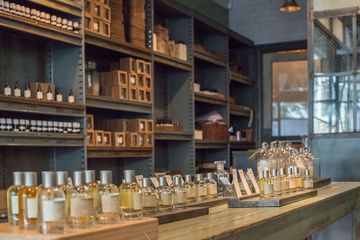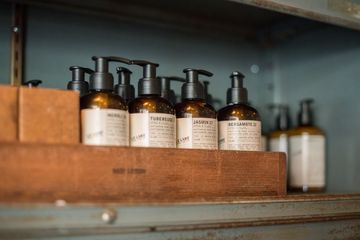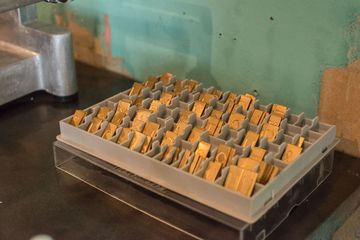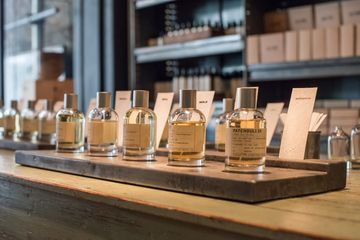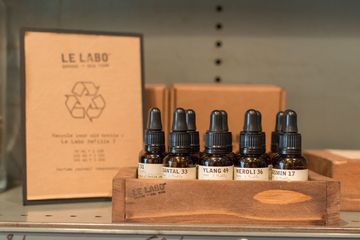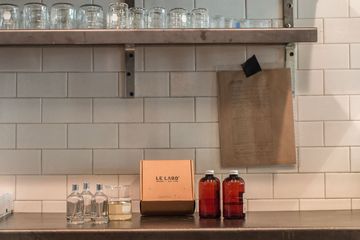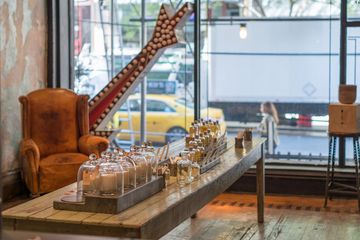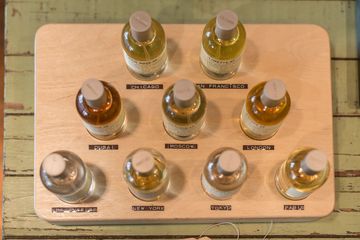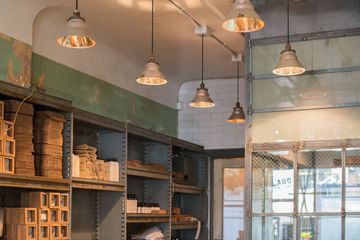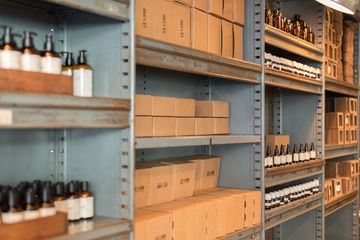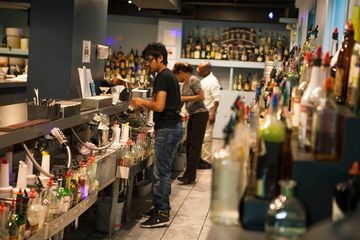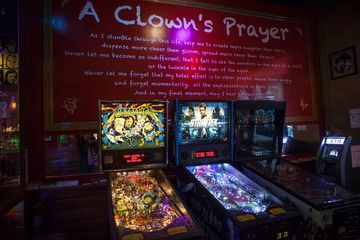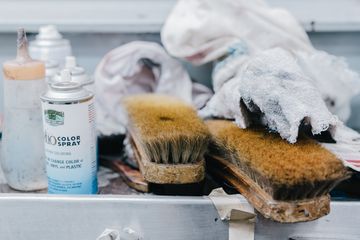
Walking into Le Labo, I was hit with a beguiling bouquet of scents. As someone who has never been fond of overly floral, fruity perfumes, I fell in love with the woodsy, sometimes spicy smells wafting around the simply set up store that seemed straight out of a Wes Anderson film. Cali, the salesperson who greeted me, explained that all the scents are unisex and vegan, made with no sulphates. She also explained that everything is made in the store in small batches so that the aging process starts upon purchase rather than on the shelf. Listening to her proudly tell me about their high standards of quality control and emphasis on craftsmanship, I became even more impressed with the small, rustic shop.
As she showed me the newly-launched roll-on perfumes based in safflower oil (rather than alcohol), Cali told me more about the brand. Le Labo’s founders, Fabrice Penot and Eddie Roschi, created the company in Grasse, a town on the French Riviera, but “raised the brand in New York.” They wanted to "start a revolution," choosing not to advertise or keep any of their stock on the shelf, preferring the laboratory approach of bottling each scent personally for every shopper in the workshop at the back of their boutiques. I saw the beautiful individualized labels, each with a space to mark the day the perfume was bought. Cali also showed me the beautiful old machine that is used to engrave metal packaging. “These are all tools, not machines,” Cali pointed out. “It is all about craftsmanship.”
She finished her tour of the wares, including candles, jars full of classic perfume ingredients, solid perfumes based in coconut oil and beeswax, and a collection of her favorite scents (since she discovered that we were both “woodsy gals”). Each scent is marked with its base ingredient, and I learned that the number one seller is Santal 33 (made with Sandalwood). Cali was kind enough to make me a little sachet of samples to try. With such a personal touch given to each little bottle, it is hard for me to decide which scent I like best.
